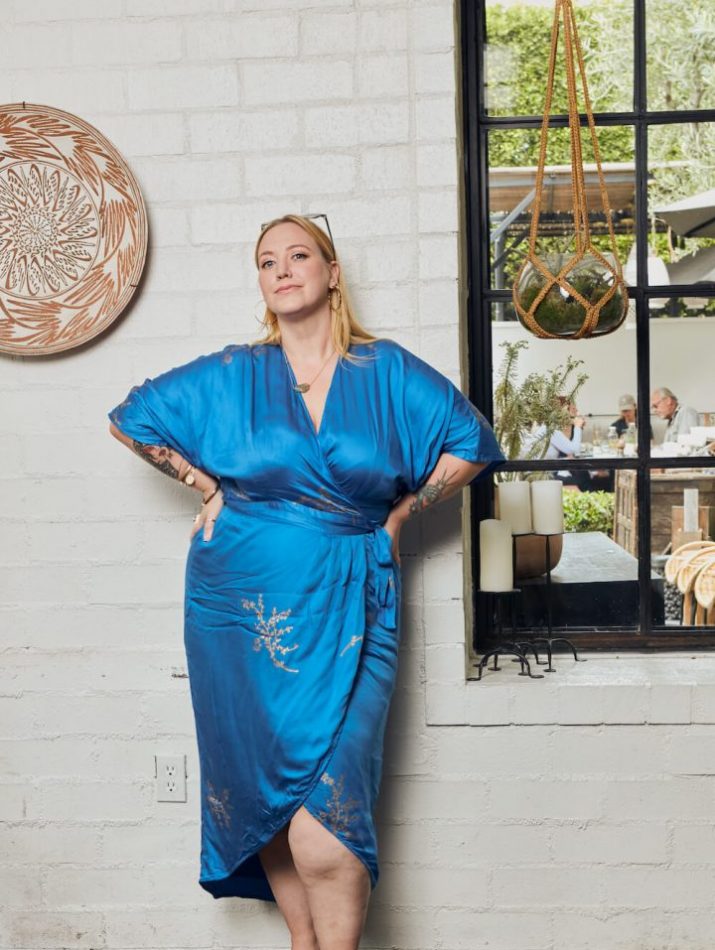
In the last 10 years, there's been huge progress and change in the plus size fashion industry - with more and more retailers offering clothing in sizes 16 and over, meaning brands have become more size inclusive than ever before. There's also been a massive shift towards sustainable fashion as the climate emergency becomes more urgent and Millennials and Gen Z consumers have become more educated on how clothing consumption impacts the planet and are voting with their wallets.
But while there have been many plus size fast fashion brands springing up, with the rise of Shein, Temu , Pretty Little Thing and Boohoo offering extended sizing - many commentators in the plus size community are lamenting that fast fashion brands are sometimes the only option they have.
There is plenty of press coverage that points to how harmful fast fashion can be, both for the garment workers making the clothing and for the environment.
It's not uncommon for influencers and celebrities to be criticized or shamed for promoting fast fashion and by now we've all seen those Tiktok videos of Shein garments with 'HELP ME' messages sewn onto the labels. Fast fashion has got a bad rep for a good reason.
But while the overall amount of plus size clothing is still limited compared to 'straight size', especially over a size 22 - fast fashion is not your only option as a plus customer.
INSYZE are dedicated to showcasing ethical brands
You can shop items in sizes 12 - 34 across basics, dresses, activewear, swimwear, office attire and formal wear.
Check out the INSYZE brands here.
Isn't sustainable fashion expensive?
One of the reasons many people stick with fast fashion brands, even when they know how damaging they are is because of the price.
When you can get a dress for $30, it feels like a huge win.
But while fast fashion is very cheap - that doesn't mean that sustainable and ethically made options can't be affordable too.
In fact, having to regularly replace fast fashion garments when they fall apart after a couple of washes makes their 'Cost per wear' higher than ethically made clothing.
How to calculate Cost Per Wear
Cost Per Wear encourages us to think economically about the clothes we buy.
You calculate Cost Per Wear by taking the price you pay for a garment and dividing it by the amount of times you wear it.
For example, if you buy a dress for $100, and wear it 4 times, that garment cost you $25 each time you wore it.
However, if the $100 dress you buy ends up lasting for years and you wear it 50 times over its lifetime, the Cost Per Wear is $2.
Some items will realistically be worn more than others, such as everyday basics - so the cost per wear is lower the more you use the clothing you buy.
Realistic and affordable sustainable fashion shopping guide
After being excluded from trendy items for so long, it's understandable if you don't think it's realistic that you'll never purchase from fast fashion brands.
If you want the super latest trends and can't find those 90s style cargo pants in your size at a thrift store - then purchasing the occasional piece to achieve a look is realistically what you'll do.
If you do purchase fast fashion, you can care for it by washing it gently and air drying to extend its lifespan. We also recommend selling it on our Facebook group Plus Size Outfit Share when you're over it.
If the item is not in a resale condition or has fallen apart after a few washes, take it to a recycling bank so that it can be repurposed.
Did you know: 100 billion garments are produced globally each year, with 33% going to landfill within the first year of purchase.
Monash University, 2021
For every day items and long term pieces, we recommend shopping ethical brands on INSYZE. These are the pieces that will last you a long time and be a big part of your capsule wardrobe. You'll wear your quality pieces more often as they retain their color, shape and integrity of the fabric.
And remember to keep the Cost Per Wear in mind when purchasing higher quality items.